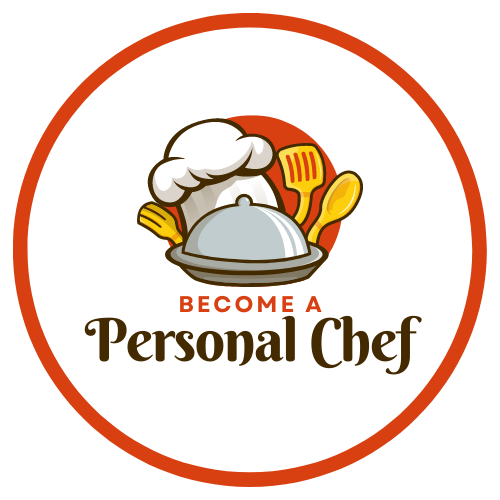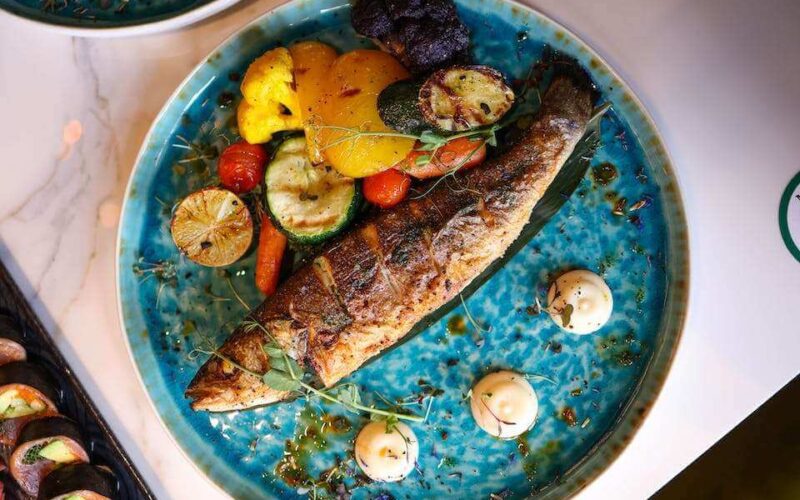Table of Contents
TogglePersonal Chef for Celiac Disease
In the culinary world, being a personal chef is about more than just creating delicious meals. It’s also about understanding your clients’ unique dietary needs and crafting dishes that not only tantalize their taste buds but also promote their health.
For clients with celiac disease, a professional personal chef’s specialized diet service can be a beacon of hope.
Incorporating special diets into your services is not just about cooking—it’s about enhancing your clients’ quality of life through your culinary expertise. It may seem like a daunting task, but the rewards are immense. Read the giant list of special diets for personal chefs. Your next client might need your help!
Understanding Celiac Disease
Celiac disease is an autoimmune disorder where the ingestion of gluten leads to damage in the small intestine. Gluten is a protein found in wheat, rye, and barley.
When people with celiac disease eat gluten, their body mounts an immune response that attacks the small intestine, specifically the villi – small fingerlike projections that promote nutrient absorption.
The Role of a Personal Chef
As a personal chef, you can play a pivotal role in managing your client’s celiac disease. By developing a completely gluten-free menu, you can help them avoid the harmful effects of gluten while still enjoying a variety of delicious meals.
This involves careful ingredient selection, preparation, and cooking to prevent any cross-contamination with gluten-containing foods.
Special Tools and Guidelines
While no special tools are required, it’s crucial to keep your cooking surfaces and utensils strictly gluten-free when preparing meals for a client with celiac disease. Cross-contamination can occur even with small amounts of gluten, so having separate equipment for gluten-free cooking is beneficial.
Key guidelines to follow include:
- Strictly Gluten-free: All ingredients used must be free of gluten. This includes checking labels for hidden sources of gluten in sauces, seasonings, and processed foods2.
- Avoid Cross-contamination: Use separate utensils, cutting boards, and cookware for gluten-free cooking3.
- Diverse Menu: Despite the restrictions, aim to provide a diverse menu to ensure your client enjoys a balanced and varied diet.
Wondering what tools a personal chef might need? I’ve written an extensive article for you – A Comprehensive List Of Must-Have Tools and Essential Items for the Personal Chef
Finding More Information
For more information on celiac disease and gluten-free diets, consider resources like the Celiac Disease Foundation, National Celiac Association, or the Mayo Clinic. These organizations offer comprehensive guidelines on managing celiac disease through a gluten-free diet.
Marketing Your Service
To market your specialized diet service, highlight the care you take in ensuring a completely gluten-free environment for meal preparation. Share testimonials from clients who have benefited from your service.
Consider hosting gluten-free cooking workshops or webinars to showcase your expertise. Partnering with local gastroenterologists or dietitians can also be a great way to reach potential clients.
Personal Chef for Celiac Disease
Cooking for clients with celiac disease may seem daunting, but it’s an opportunity for you to make a real difference in their lives. By providing a safe, gluten-free dining experience, you’re not just feeding your clients—you’re supporting their health and well-being.
So embrace the challenge, hone your skills, and remember: every meal you prepare is a step towards a healthier, happier life for your clients.
Here are some of my favorite tools for providing my personal chef service
As an experienced personal chef, I’ve found that the secret to creating mouthwatering dishes goes beyond just having a passion for food. It’s also about using the right kitchen tools. Today, I’m going to share with you my must-have kitchen items that help me bring my culinary creations to life.
1. Chef’s Knife
The first item on my list is a high-quality chef’s knife. It’s the most versatile tool in my kitchen, perfect for chopping, slicing, and dicing. My preference is for a Global Chef’s Knife, known for the edge and the way they are balanced.
2. Cast Iron Skillet
Next up is a good old cast-iron skillet. From searing steaks to baking cornbread, this pan does it all. I love the Lodge Cast Iron Skillet, which retains heat beautifully and adds a nice crust to anything you cook.
3. Stainless Steel Pots and Pans
A set of stainless steel pots and pans is essential for a variety of cooking techniques. They’re great for simmering, boiling, and sautéing. All-Clad’s Stainless Steel Cookware Set is my go-to choice for its exceptional performance and durability.
4. Immersion Blender
An immersion blender makes pureeing soups, making smoothies, and blending sauces a breeze. I suggest the Braun Multiquick Hand Blender, which is powerful, easy-to-clean, and highly versatile.
5. Digital Thermometer
To ensure perfectly cooked meats every time, a digital thermometer is a must. The ThermoPro TP19 Waterproof Digital Meat Thermometer provides speedy and accurate readings, ensuring your roast chicken or prime rib is cooked to perfection.
6. Silicone Spatula
A silicone spatula is a chef’s best friend for its versatility. It’s heat-resistant, non-stick, and perfect for everything from folding batter to stirring sauces. I recommend the OXO Good Grips Silicone Spatula.
7. Stand Mixer
Lastly, for avid bakers, a stand mixer is a game-changer. The KitchenAid Artisan Series 5-Qt. Stand Mixer isn’t just a pretty face; it makes mixing doughs and batters effortless.
These are the tools that I use daily in my personal chef service. Remember, quality tools make a difference, but they don’t have to break the bank. Start with the basics and add on as you grow more comfortable and adventurous in the kitchen.
Happy cooking!

